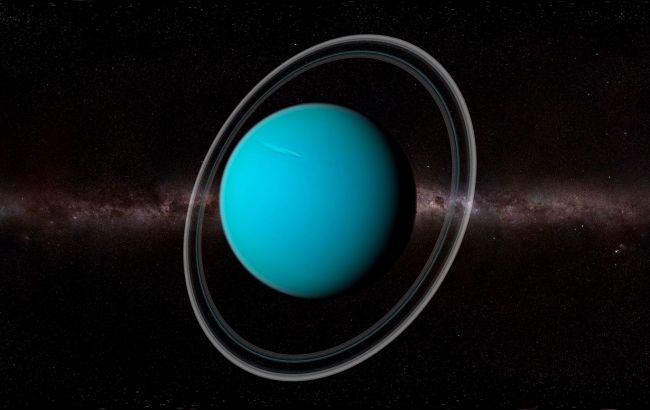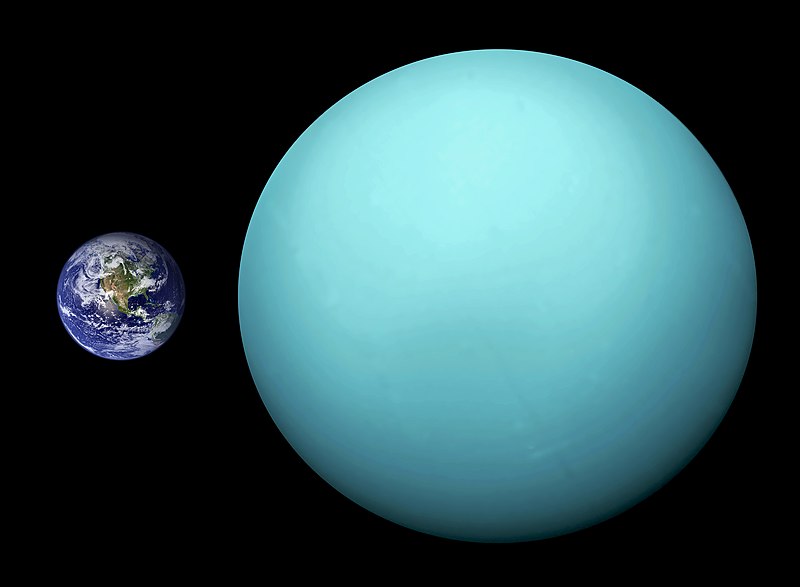Potential formation of atmosphere on Uranus' moons unveiled by scientists
 Illustrative photo (Photo: Getty Images)
Illustrative photo (Photo: Getty Images)
The process of forming an atmosphere depends on the size of the celestial body, its distance from the Sun, and numerous other parameters. Recently, scientists have identified the circumstances under which an atmosphere can form on Uranus' moons.
RBC-Ukraine explains what is worth knowing about the planet Uranus, its moons, and the formation of atmospheres on them.
In preparing the material, the following sources were used: New Scientist, NASA Science, Wikipedia.
Key points about Uranus
Uranus is the seventh planet from the Sun and belongs to the giants in our solar system. It ranks third in diameter and fourth in mass among all the planets.
Interestingly, Uranus became the first planet discovered in modern times and was identified using a telescope. Its discovery on March 13, 1781, was announced by the English astronomer William Herschel.
Despite being occasionally visible to the naked eye in the sky, early observers never recognized it as a planet due to its dimness and slow movement across its orbit.
The planet was named after the ancient deity Uranus, representing the embodiment of the sky and celestial space.

The size comparison between Earth and Uranus (photo: Wikipedia)
How many moons does the planet have
Uranus is a gas giant with a ring system and a magnetosphere.
The atmosphere of Uranus consists mainly of hydrogen and helium. Traces of methane (and other hydrocarbons) and clouds (made of ice, solid ammonia, and hydrogen) have also been detected.
The atmosphere of this planet is the coldest in the Solar System, with temperatures reaching a minimum of -224 degrees Celsius.
There are 27 moons orbiting Uranus (named after characters from the works of William Shakespeare and Alexander Pope). They can be divided into three groups:
- Five large moons (Titania, Oberon, Ariel, Umbriel, Miranda)
- Thirteen inner moons (small, dark objects, resembling the characteristics and origin of the planet's rings)
- Nine irregular moons (with orbits at a considerable distance from the planet) A panel showing the five major moons of Uranus

Largest moons of Uranus (Photo: NASA/JPL-Caltech)
Formation of atmospheres on moons
During a meeting at the American Geophysical Union in California, physicist Ben Teolis from the Southwest Research Institute in Texas and his colleagues discussed their laboratory experiments regarding the influence of seasonal changes and temperatures on carbon dioxide on Uranus.
Computer modeling showed that the sunlight in the spring is strong enough to cause the ice (abundant on Uranus' moons) to begin vaporizing.
As a result, a short-lived atmosphere will form on the planet's moons (billions of times thinner than Earth's atmosphere).
Scientists have determined when an atmosphere might form on Uranus' moon.

Orbits of Uranus' moons (screenshot: science.nasa.gov)
It's worth noting that spring and summer on Uranus' satellites begin roughly when they do on the planet itself (one season lasts about 21 Earth years).
Due to the planet's tilt, each of its poles receives sunlight for 42 years. After this, there are 42 years of darkness.
According to scientists, when cooling begins on Uranus (and its satellites), the atmosphere will freeze and fall onto the satellite's surface as snow or similar precipitation.
"On Uranus’s moons, the polar night zones spend 42 [Earth] years in darkness with the surface looking up at this black sky, and it gets so cold that atmospheric particles literally freeze to the surface," explained Teolis.
During this period, he describes that "the entirety of the atmosphere gets sucked down to the surface and freezes to the pole, and then it surges back up again, and at the end of the season it freezes back down to the other pole."
Additionally, it's worth mentioning that the most powerful solar flare in six years was previously observed on the Sun.
Furthermore, scientists have estimated how many planets in the Milky Way life could exist.

